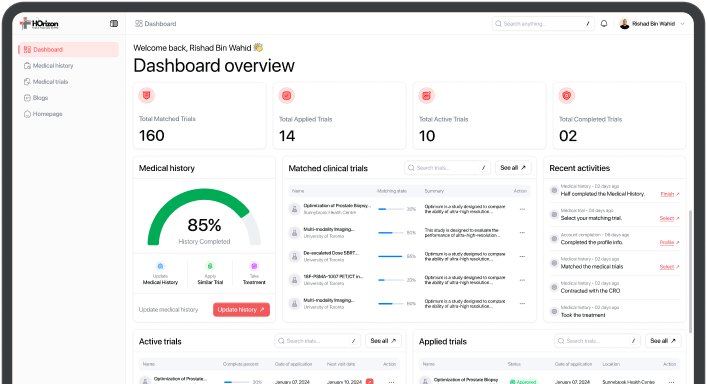
Combination of Olaparib and Navitoclax in Women With HGSC and TNBC
Contact information
Helen Mackay
Sunnybrook Research Institute/Odette Cancer Centre
Odette Cancer Centre
Basic information
Age
36 Enrollment
Trial Details
Brief Summary
The purpose of this Phase I study is to determine if the PARP inhibitor olaparib can be safely combined with navitoclax, an inhibitor of Bcl-2/Bcl-XL, in women with TNBC who have somatic or germline mutations in breast cancer gene one (BRCA1) and breast cancer gene two (BRCA2) BRCA1/2 or PALB2 and in women with recurrent HGSC who have progressed greater than 6 months since their last platinum containing chemotherapy. The trial is designed as an open- label multi-center Phase I interventional and translational study. It will identify the dose-limiting toxicities (DLTs), maximum tolerated dose (MTD) and RP2D of olaparib combined with navitoclax for study in Phase II. There is a plan for a follow on Phase II study depending on the results obtained during this Phase I trial.The rationale for this study is that for a subset of patients, olaparib, will increase tumor cell survival dependence on inhibition of cell death by Bcl 2/Bcl- XL. Thus, navitoclax will augment apoptosis induced by PARP inhibition with olaparib.
Official Title
A Phase I Trial of the Combination of Olaparib and Navitoclax in Women With High Grade Serous Epithelial Ovarian Cancer and Triple Negative Breast Cancer
Selection Criteria
Eligibility Inclusion Criteria
-
Histologically confirmed:
Recurrent metastatic HGSC of ovarian, peritoneal or fallopian tube origin with radiological progression greater than 6 months from last platinum based therapy.
Metastatic TNBC: tumors that are known to have deleterious somatic or germline mutations in BRCA1, BRCA2, or PALB2.
Age ≥ 18 years of age.
ECOG Performance Status of 0, 1 or 2 within 7 days prior to registration (Appendix 4).
No more than two (2) prior lines of treatment for TNBC.
No limit on the number of prior lines for HGSC.
Prior maintenance or treatment with PARP inhibitor is allowed provided progression did not occur on or within 6 months of discontinuing the drug. Patients must be considered able to tolerate olaparib as per dosing regimen in this study.
Patients must be able to swallow and retain oral medications and without gastrointestinal illnesses that would preclude absorption.
Patients must be able and willing to undergo study related procedures (biopsies pre and on treatment) and to provide archival tissue, if available.
Patients must have a life expectancy ≥16 weeks.
Patients must have adequate organ and marrow function measured within 28 days prior to administration of study drug
Patients must have measurable disease as defined by RECIST 1.1. Progressive irradiated lesions considered but would require an additional out of field measurable lesion.
Postmenopausal or evidence of non-childbearing status for women of childbearing potential: negative urine or serum pregnancy test within 28 days of study treatment and confirmed prior to treatment on day 1.
Eligibility Exclusion Criteria
-
Prior chemotherapy, endocrine therapy, radiotherapy, or investigational agents within 30 days prior to first dose of investigational products (IPs).
Due to the expected dose-limiting toxicity of thrombocytopenia, the following concomitant medications are not allowed within 14 days of the olaparib lead-in period: Warfarin, clopidogrel (plavix), ibuprofen, tirofiban (aggrastat), and other anticoagulants drugs including low molecular weight heparin, or herbal supplements that affect platelet function are excluded. Caution should be exercised when dosing Navitoclax concurrently with CYP2C8 and CYP2C9 substrates.
Due to the known effects of navitoclax on platelet counts, patients with active bleeding or thrombocytopenia-associated bleeding within 1 year, active peptic ulcer disease or potentially hemorrhagic esophagitis or gastritis, a requirement for concurrent therapeutic anticoagulants, or a history of immune thrombocytopenic purpura, autoimmune hemolytic anemia, or refractoriness to platelet transfusions.
